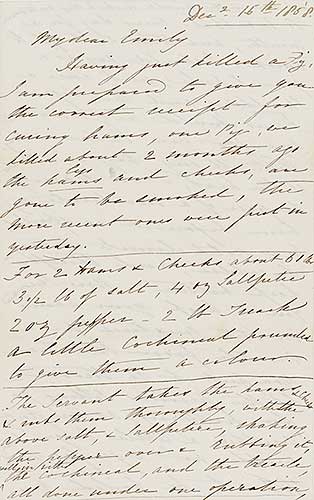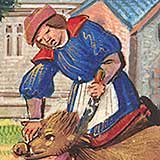
Meat, game and poultry
Preserving meat
Until the agricultural improvements of the 18th century, most animals were slaughtered before the winter months and their flesh preserved. Rancid flesh could be disguised with expensive imported spices.
For longer-term preservation, flesh might be salted, pickled in vinegar, smoked or potted under a layer of butter in readiness for the winter to come.
'At or about Martinmas, such of the inhabitants who are anything beforehand with the world salt up a quantity of beef, as if they were going on a voyage'.
— William Ellis, writing of Scotland in the 1720s in 'Country housewife's family companion', 1750. [Library reference: Sut.99]
Traditionally there has been considerable prejudice against pork in Scotland, but many Scots — whether in Highland cottages or Edinburgh tenements — kept a pig to eat waste and to provide the occasional meal.
When a pig was killed, a family would eat some fresh pork, but much of the meat was preserved for later use or even exported pickled.
This letter of 1858 from the Cunningham Graham papers describes how to cure ham — although 'the servant' was to do the work.

Letter of 1858 giving the 'correct receipt for curing hams'. [Library reference: Acc.11335/171]
